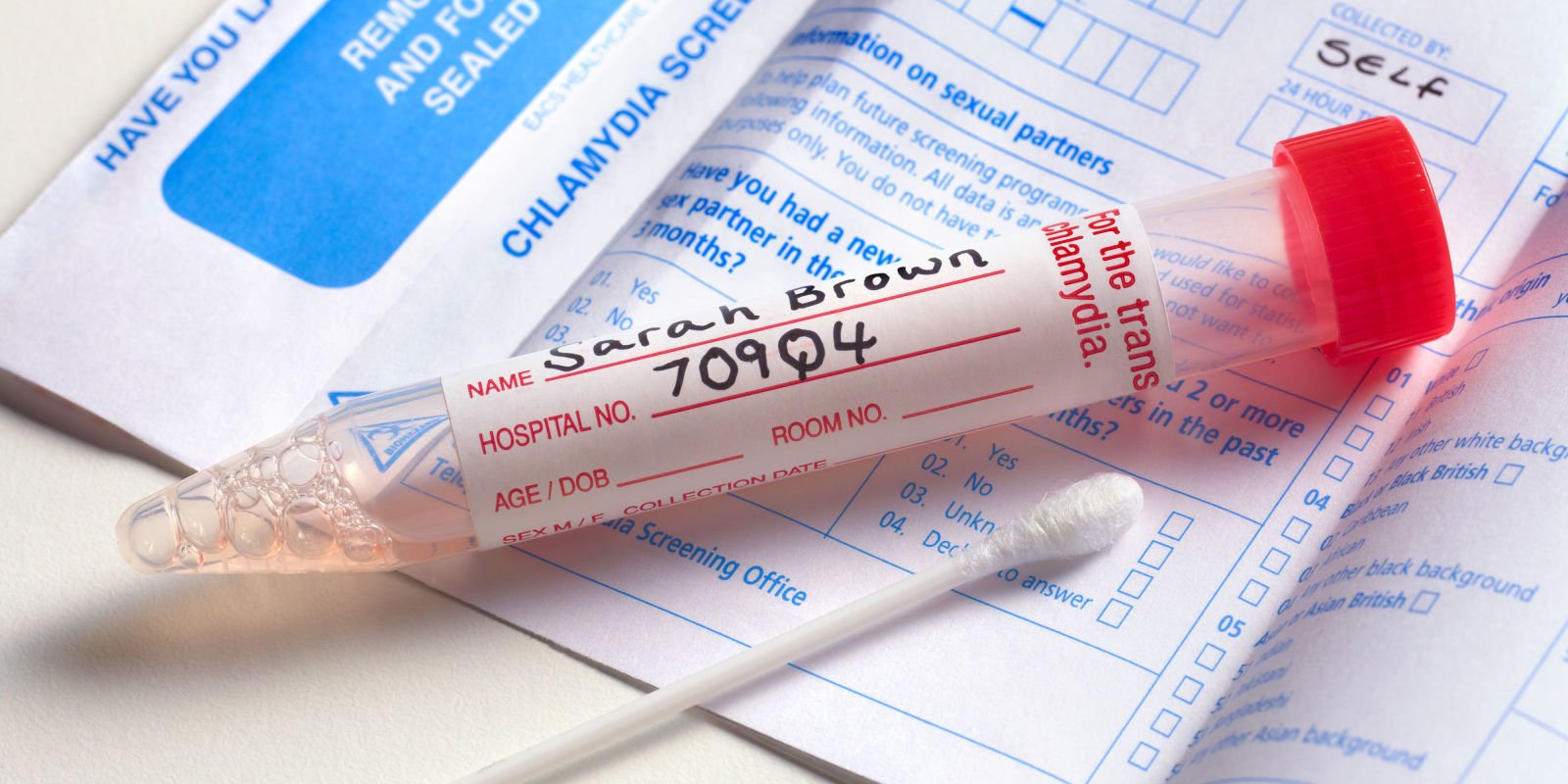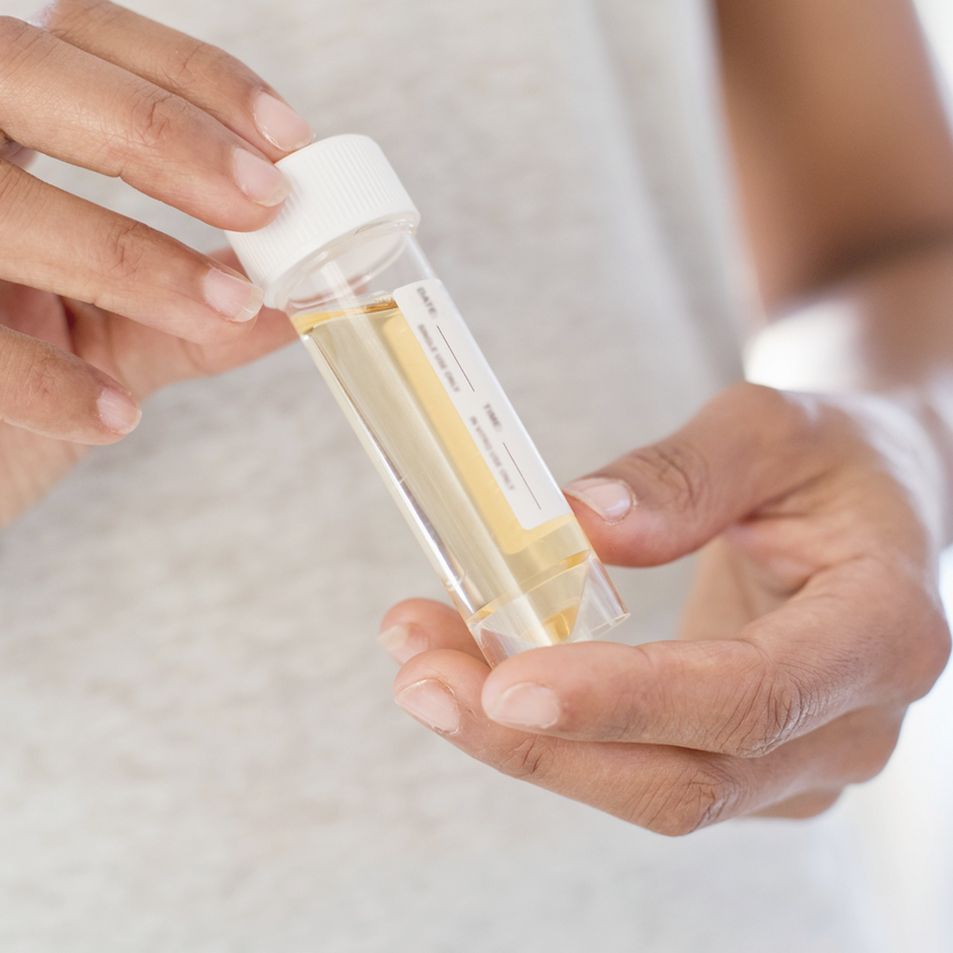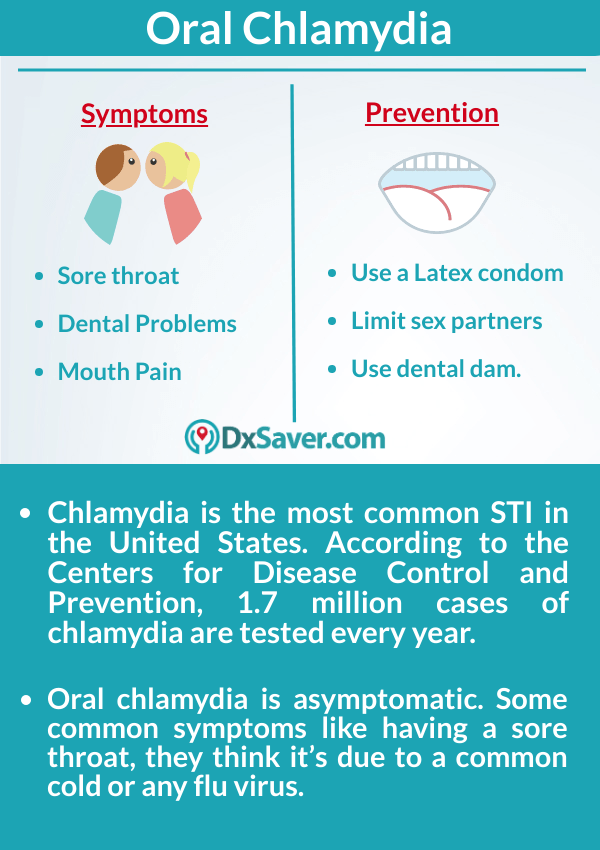Risk Of Getting Chlamydia Through Oral Sex
Kissing your girlfriend carries a very low risk of transferring Chlamydia. However, if you come into direct contact with your partners genitals or body fluids, youll be exposed to Chlamydia and therefore the chance of getting infected rises to dangerous level. This might sound familiar to you, thanks to the campaign aiming to prevent transmitting of HIV, which most of you have presumably heard about.
Oral sex isnt a 100% safe sex, even though you would probably disagree with this claim. It carries a risk of transferring STI diseases as well. Unfortunately, you cant do much in order to prevent undesired outcome. You either choose not to have oral sex or let things take their course. What could possibly go wrong? some might say. So bottom line is you can get chlamydia from oralif you dont follow certain precaution.
What Is Being Tested
Chlamydia is one of the most common bacterial sexually transmitted diseases in the United States and can cause serious complications if not treated. Chlamydia testing identifies the bacteria Chlamydia trachomatis as the cause of your infection.
The preferred method for chlamydia testing is the nucleic acid amplification test that detects the genetic material of Chlamydia trachomatis. It is generally more sensitive and specific than other chlamydia tests and can be performed on a vaginal swab on women or urine from both men and women, which eliminates the need for a pelvic exam in women.
Screening for, diagnosing, and treating chlamydia is very important in preventing long-term complications and spread of the infection to others. Chlamydia infections are especially common among people 15 to 24 years of age. The Centers for Disease Control and Prevention estimates that 2.86 million Americans are infected with chlamydia each year and notes that women are frequently re-infected if their partners don’t get treatment. The actual number of cases may be higher since many people do not experience any symptoms and do not get tested and diagnosed. Still, over one million new cases are reported each year.
Chlamydia is generally spread through sexual contact with an infected partner. Risk factors include having multiple sex partners, infection with another STD at the same time or previous STD infection, and not using a condom correctly and consistently.
How Is Chlamydia Treated
Chlamydia is treated with antibiotics. The same antibiotics a doctor prescribes to treat chlamydia in the groin may also be prescribed to treat chlamydia in the throat.
Avoid oral sex or intercourse for at least 7 days if youre taking a one-time antibiotic dose. If you take a longer course, you should wait until youve taken all your medication before having sex again.
If youve been treated for chlamydia before, you can get it again. Treatments also can stop complications you may have already experienced due to chlamydia.
After treatment, its a good idea to always have protected sex to avoid contracting a new infection.
CDC , having chlamydia in the throat might increase the risk for getting HIV.
Having chlamydia in the throat can make you more vulnerable to other infections. Your body is so busy fighting off the chlamydia bacteria, it doesnt fend off other infections as effectively. This can cause problems such as mouth infections, tooth loss, gum disease, and dental pain.
Risks of untreated chlamydia infections
- increased risks for ectopic pregnancy
- increased risks for preterm delivery in pregnant women
- inflammation of the upper genital tract
- pelvic inflammatory disease, a condition that affects fertility pelvic pain
- perihepatitis, an inflammation in the capsule that surrounds the liver
- reactive arthritis, a form of inflammatory arthritis
Don’t Miss: How Long Before Chlamydia Turns Into Hiv
How Common Is Oral Chlamydia
Chlamydia is the most common STI in the United States. According to the Centers for Disease Control and Prevention ,1.7 million cases of chlamydia are tested every year. As chlamydia is asymptomatic in many people, it is assumed that the number of infected individuals who are infected is much higher. A 2016 review of the literature investigated the presence of pharyngeal chlamydia in women in the U.S, men who have sex with women, and men who have sex with men. The report shows that:
- 0.2-3.2% of women have pharyngeal chlamydia
- 0-22.0% of men who have sex with women have pharyngeal chlamydia
- 0-3.6% of men who have sex with men have pharyngeal chlamydia
How Chlamydia Is Treated

Chlamydia can usually be treated easily with antibiotics.
You may be given a course of doxycycline to take for a week or azithromycin to take once a day for 3 days.
If you have doxycycline, you should not have sex until you and your current sexual partner have finished treatment.
If you have azithromycin, you should wait 7 days after treatment before having sex .
It’s important that your current sexual partner and any other recent sexual partners you have had are also tested and treated to help stop the spread of the infection.
Under-25s who have chlamydia should be offered another test 3 to 6 months after being treated.
This is because young adults who test positive for chlamydia are at increased risk of catching it again.
Sexual health or genitourinary medicine clinics can help you contact your sexual partners.
Either you or the clinic can speak to them, or they can be sent a note advising them to get tested.
The note will not have your name on it, so your confidentiality will be protected.
Also Check: I Was Treated For Chlamydia But Still Have It
Chlamydia Symptoms & Treatment
FAST FACTS
- Chlamydia is a sexually transmitted infection that is normally passed on through sex without a condom or sharing sex toys with someone who has the infection.
- Using male or female condoms and dental dams during sex will help to protect you from getting chlamydia.
- Chlamydia is often symptomless however if left untreated it can lead to long-term health problems.
- Chlamydia is easily treated with antibiotics.
- Chlamydia can be passed on from mother to child during pregnancy, so its important for pregnant women to get tested.
How Can I Reduce My Risk Of Getting Chlamydia
The only way to avoid STDs is to not have vaginal, anal, or oral sex.
If you are sexually active, you can do the following things to lower your chances of getting chlamydia:
- Be in a long-term mutually monogamous relationship with a partner who has been tested and has negative STD test results
- Use latex condoms the right way every time you have sex.
Read Also: Does Chlamydia Ever Go Away
Who Should Get Tested For Chlamydia
Because chlamydia is very common and often has no symptoms, anyone who is sexually active should think about being tested. Because chlamydia is very common among young women, The Centers for Disease Control and Prevention recommend sexually active women age 25 or younger get tested once per year. Chlamydia testing is also recommended for women with new or multiple sexual partners and pregnant women.
Anyone who is sexually active should talk with a healthcare provider about whether they need testing for chlamydia or other STIs. Dont be afraid to speak openly about your sex life, as you can get the best care by having an honest discussion with your healthcare provider.
Some Of The Best Home Chlamydia Tests
Below are four companies in good standing with the Better Business Bureau . The first three tests involve providing samples in a lab, so they may be more accurate. The fourth test, which involves sending in the sample, may be more convenient.
Please note that the writer of this article has not tried these products. All information presented is purely research-based.
Don’t Miss: One Day Pill For Chlamydia
More About Pelvic Inflammatory Disease
For women, one of the most serious complications from untreated chlamydia is pelvic inflammatory disease .
According to the Centers for Disease Control and Prevention, between 1020% of women with untreated chlamydia and gonorrhea infections may develop PID. And 1 in 8 women with a history of PID experience difficulties getting pregnant. PID can also cause ectopic pregnancy and chronic pelvic pain.
Like chlamydia, it is possible for a woman to have PID and not have any symptoms, or have symptoms too mild to notice, for an unknown period of time. If symptoms do occur, they could include:
- Dull pain or tenderness in the lower abdomen
- Burning or pain when you urinate
- Nausea and vomiting
- Increased or changed vaginal discharge
- Pain during sex
When To See A Doctor
People who are at a higher risk of STIs, and those who have symptoms of an STI, including genital discharge, unusual sores, rashes, or a burning sensation during urination, may wish to see a healthcare professional as soon as possible for screening.
Doctors can treat chlamydia by prescribing antibiotics. According to the United Kingdom National Health Service , more than 95% of chlamydia cases are curable if people take their medication correctly.
A healthcare professional may prescribe either a single oral dose of azithromycin or a twice-daily dose of doxycycline for 7 days. Recommendations also advise against engaging in oral sex or intercourse for at least 7 days until treatment is complete.
Without treatment, chlamydia can cause serious problems, such as:
- inflammation of the testicles, which may affect fertility in males
Don’t Miss: How Do You Know If You Have Chlamydia Male
How To Treat Oral And Nose Chlamydia
Testing of the nose and oral chlamydia is usually done by swabbing the affected area. If you have developed some sores around the nose or in the throat region, doctors will swab them to collect samples for an oral chlamydia test. These samples are tested to know about the presence of the virus. The great news is that it is possible to treat this STD with the help of some antibiotics. However, if you are infected, it is important to follow some expert rules for your sexual life until the virus is completely out of your body.
In case if you keep on ignoring the disease symptoms so long, the chlamydia infection may go from mild to severe condition, and it may cause a huge impact on your life. With time it starts causing more damage to the body, and it may be irreversible as well. Hence, it is important to start oral chlamydia medication on time.
What Does Chlamydia In The Throat Look Like

Chlamydia in the throat may cause white spots to appear in the back of the throat or tonsils. If you have swollen tonsils and any other symptom that resembles a strep throat infection, it may be wise to still get tested for chlamydia. These white spots may resemble tonsillitis that are caused by a bacterial infection.
Read Also: What Are All The Ways You Can Get Chlamydia
How Does Anal Chlamydia Get Transmitted
Anyone can get anal Chlamydia as long as they are having anal sex and they are the receiving party. This type of chlamydia is common among men who have sex with other men. Some women have also experienced this type of Chlamydia, and some of them were not engaged in anal sex. In some very unfortunate situations, genital chlamydia sometimes spreads into the anus in women which explains why they may feel some discomfort in the rectum. The take-home point here is that, a woman can have chlamydia in the rectum without having anal sex, but that only means she must have had genital chlamydia before that.
More: Facts about chlamydia bacteria
A Few Questions First
To decide what exams or tests you might need, the health care provider will ask you questions about your sexual health history. To get the best care, it helps to be as honest as you can. Ask questions if you need more information.
In BC, positive test results for HIV, chlamydia, syphilis, gonorrhea and hepatitis C are shared with public health to ensure that you and your partners are offered treatment, support and follow-up.
When you test for HIV, you may choose to use your name , or initials and birth date .
STI and HIV testing is confidential, which means your health information is private.
Don’t Miss: How To Test For Oral Chlamydia
How To Collect A Throat Swab
Chlamydia can be spread to the throat during oral sex, despite most frequently infecting the cervix, urethra or rectum. Pharyngeal swabbing is the preferred method of specimen collection, which involves swabbing the area behind the nasal cavities, mouth, and larynx.
Use a sterile flocked swab that comes with a transport medium filled vial, ex: Universal Transport Media system
Have the patient tilt their head backwards, open their mouth, and stick out their tongue
Without touching the side of the mouth, swab the posterior nasopharynx and the tonsillar arches
Remove swab and insert into a vial containing 1-3 ml of transport media
Break the swab handle at scored breakpoint line
Label the vial with appropriate patient information
How To Collect A Rectal Swab
Gonorrhea and chlamydia often occur simultaneously because the risk factors are very similar. Patients who are suspected of having one of these sexually transmitted bacterial infections are usually tested for the other as well.
Insert a sterile swab approximately 2.5 cm into the anal canal
Move swab from side to side in the anal canal
Allow swab to remain 10-30 seconds for absorption of organisms onto the swab
Remove swab and insert into a vial containing 1-3 ml of viral transport media
Label the vial with appropriate patient information
You May Like: Long Term Effects Of Chlamydia
If You Have Further Questions Contact Your Ob
Don’t have an ob-gyn? Search for doctors near you.
FAQ071
Copyright 2021 by the American College of Obstetricians and Gynecologists. All rights reserved. Read copyright and permissions information.
This information is designed as an educational aid for the public. It offers current information and opinions related to women’s health. It is not intended as a statement of the standard of care. It does not explain all of the proper treatments or methods of care. It is not a substitute for the advice of a physician. Read ACOGs complete disclaimer.
How Do You Know If You Have Chlamydia In Your Throat
Many people with chlamydia in the throat have no symptoms. The only way to know for certain if you have this sexually transmitted infection in the throat is to get tested by a healthcare provider. Possible signs that you may have oral chlamydia include a sore throat that doesnât go away, along with a low-grade fever swollen lymph nodes oral canker sores or white spots in the back of the throat.
In some cases, one might confuse these chlamydia symptoms with strep throat or some other kind of throat infection. That’s why testing for STDs is so important, so consult with your healthcare provider if you suspect you may have been infected with an oral sexually transmitted disease.
Read Also: How Soon Can You Treat Chlamydia
Are Test Results Accurate
Although chlamydia testing is an important method of finding and treating this common STD, test results could be impacted by the following:
- The use of antibiotics within several days before testing
- Urinating within one hour of sample collection
- Vaginal douching within 24 hours of testing
- Improper sample collection
- Contamination of rectal samples with fecal matter
Chlamydia In The Throat: Causes Symptoms And More

Medically reviewed by Rosanna Sutherby, PharmD on January 31, 2020. Written by Karen Eisenbraun. To give you technically accurate, evidence-based information, content published on the Everlywell blog is reviewed by credentialed professionals with expertise in medical and bioscience fields.
Can you get chlamydia in the throat? The answer to that question is âyesâ: although chlamydiaâone of the most common sexually transmitted infections in the United Statesâoften affects parts of the body like the genitals or rectum, it can also infect oneâs throat .
Read on for key information about the chlamydia bacterium in the throatâincluding causes, possible symptoms, and more.
If you think you may have contracted chlamydia from unprotected sex with an infected partner, consider taking our at-home Chlamydia and Gonorrhea Test. Our testing kit is discreet and easy to use, making it a convenient way to check for these STDs from the privacy of home.
You May Like: How Long Can You Leave Chlamydia Untreated
Did You Know It Gets In Your Mouth Oh And Your Butt Too
Thats right guys , were talking about those pesky sexually transmitted infections, gonorrhea and chlamydia. And you read that rightit can end up in your mouth and your butt.
So listen up to learn about the only way to test for these two serious infections, because your previous provider may not have done it correctly.
What Happens During A Chlamydia Test
If you are a woman, your health care provider will use a small brush or swab to take a sample of cells from your vagina for testing. You may also be offered the option of testing yourself at home using a test kit. Ask your provider for recommendations on which kit to use. If you do the test at home, be sure to follow all the directions carefully.
If you’re a man, your health care provider may use a swab to take a sample from your urethra, but it is more likely that a urine test for chlamydia will be recommended. Urine tests can also be used for women. During a urine test, you will be instructed to provide a clean catch sample.
The clean catch method generally includes the following steps:
Don’t Miss: How Long Can Chlamydia Last